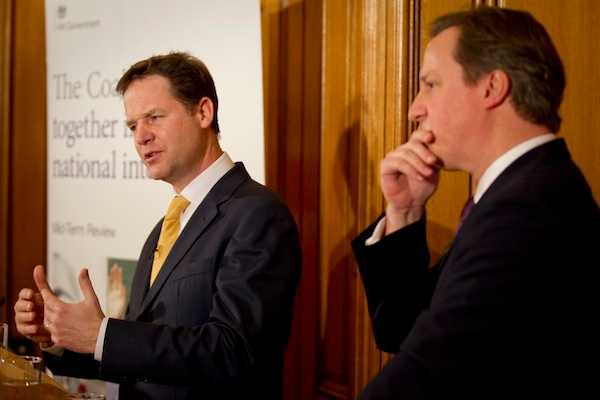‘We have reduced the deficit by a quarter in just two years’ — the coalition’s mid-term review.
True. But when Gordon Brown proposed to do precisely the same in Labour’s last budget, George Osborne criticised him for not moving fast enough and endangering the economy. The ONS shows that public sector net borrowing was down 24 per cent from 2009-10 to 2011-12. But George Osborne cannot claim to have stuck to his deficit reduction plan. That has been torn up. The below graph shows Brown’s plan (in the middle), Osborne’s original plan (at the bottom) and his current plan (at the top):

As you can see, Osborne is now cutting the deficit more slowly than Alistair Darling proposed in 2010. Darling planned to cut the deficit by 33.9 per cent by this year, compared to the 24.3 per cent Osborne has actually managed. And what about the Treasury’s preferred measure, the deficit-to-GDP ratio?

Of course, Darling’s forecasts were based on far-too-optimistic economic forecasts (the Treasury was predicting heroic growth of 3 to 3.5 per cent in 2011 and 3.25 to 3.75 per cent in 2012), and his spending plans would actually have resulted in higher deficits than Osborne is currently racking up. But back in 2010, listening to Osborne attack Darling’s plan to cut the deficit-to-GDP ratio by a quarter in two years, it was hard to believe that he would now be boasting about doing exactly that.
The downturn forced Osborne to choose between more debt or more cuts. He chose more debt, and partly as a result Britain’s AAA rating is now under threat (Standard & Poor’s, Moody’s and Fitch all have it on ‘negative outlook’). The coalition government has many achievements in two years. But deficit reduction is an example of where it has scaled back, rather than stuck to, its original plans.






Comments